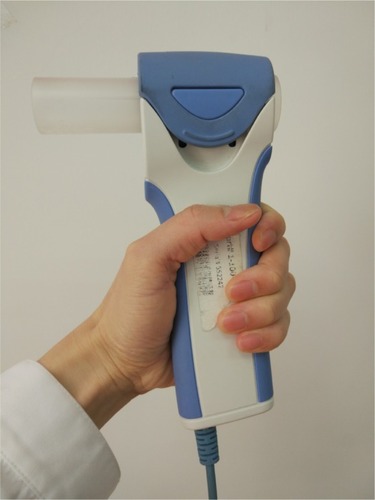Figures & data
Table 1 Correlation coefficient for all indices measured (n=241)
Figure 2 Correlation of key airflow metrics between devices (n=241).
Abbreviation: FEF25%–75%, mean FEF calculated between 25% and 75% of FVC.
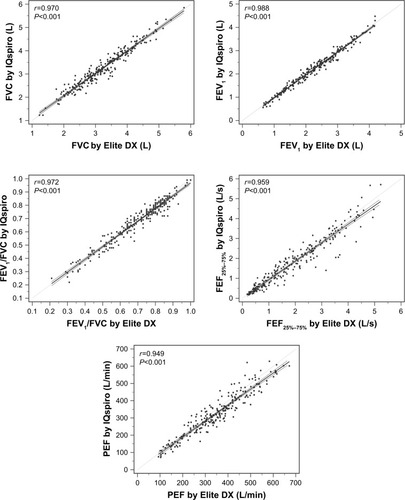
Table 2 The mean difference and 95% LoA for all parameters measured by the two spirometers (n=241)
Figure 3 Bland–Altman plot of mean differences against averages of two readings for key airflow metrics (n=241).
Abbreviation: FEF25%–75%, mean FEF calculated between 25% and 75% of FVC.
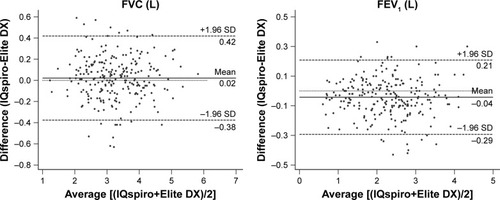
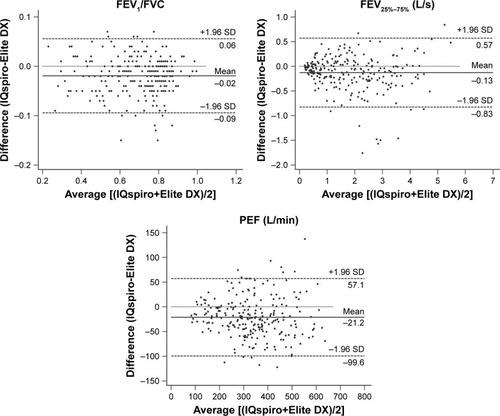
Table 3 Spirometric classification of severity of airway obstruction by two spirometers for all enrolled subjects (n=241)
Table 4 Spirometric classification of airway obstruction by two spirometers for individuals able to exhale for at least 6 seconds (FEV1/FEV6 <74%) (n=159)
Figure 4 The receiver operating characteristic curve that discriminates the optimal cutoff value of FEV1/FEV6 measured using the IQspiro (n=159).
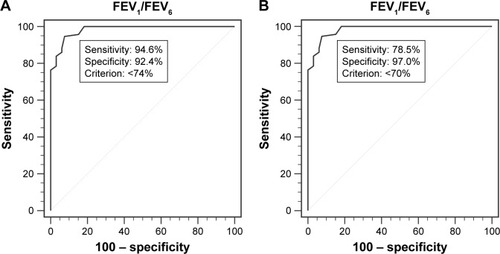
Table 5 Spirometric classification of airway obstruction by two spirometers for individuals able to exhale for at least 6 seconds (FEV1/FEV6 <70%) (n=159)

